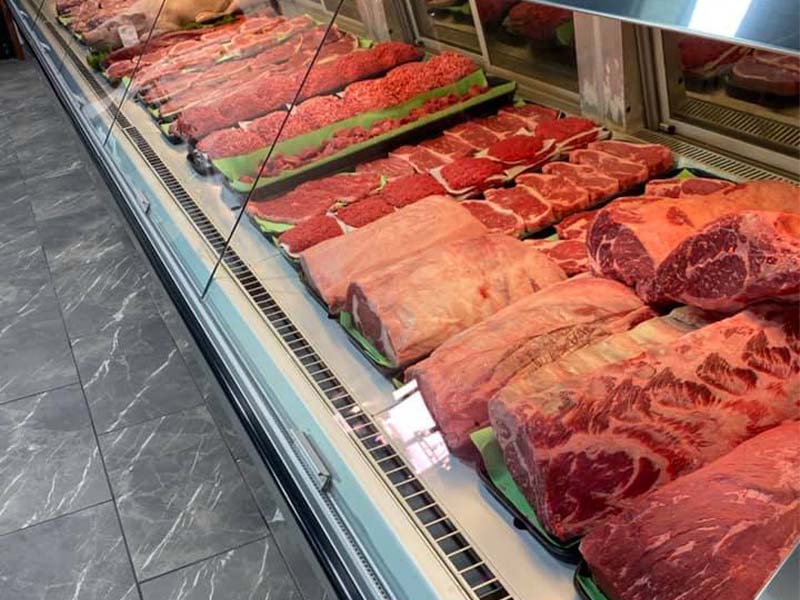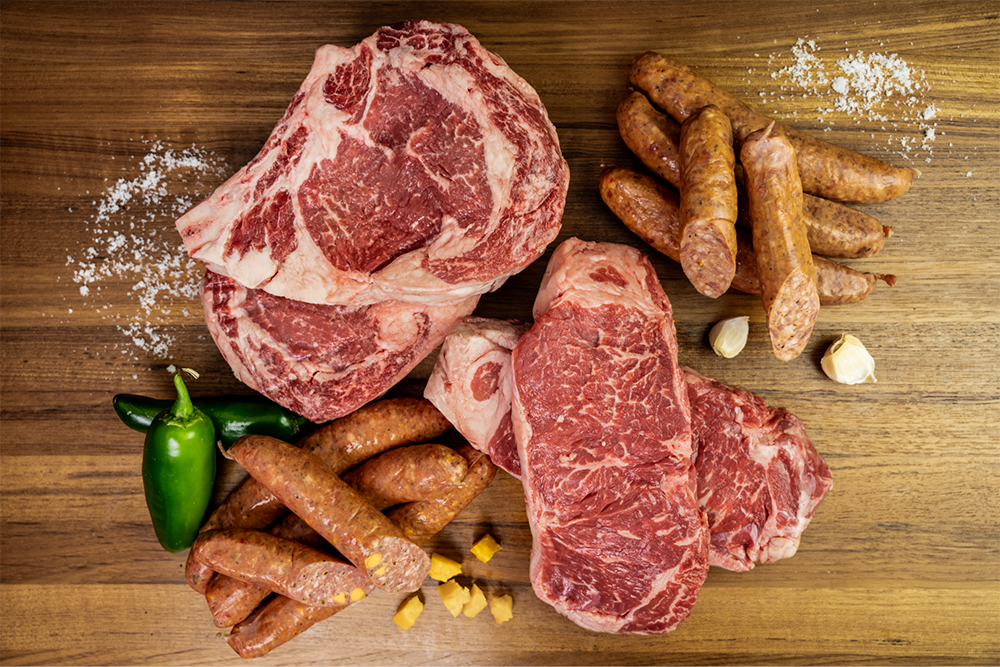Visit Bagley Farms Meat Market Edwardsville IL for Farm-Fresh Meat and Specialty Cuts
Visit Bagley Farms Meat Market Edwardsville IL for Farm-Fresh Meat and Specialty Cuts
Blog Article
Uncover the Art of the Butcher's Cut in a Modern Meat Market
In the ever-evolving landscape of modern-day meat markets, the butcher's cut has actually transcended its conventional origins, combining old-time craftsmanship with modern practices. What really establishes the modern-day butcher apart is their ability to build a deeper link in between consumers and the origins of their meat.
Advancement of Butchery Methods

The mid-20th century saw butchery techniques additionally improved by clinical understandings right into muscular tissue biology and meat aging, improving both inflammation and taste. Innovations like vacuum product packaging and refrigeration prolonged item shelf-life, permitting butchers to branch out offerings and enhance quality assurance. This duration also marked the rise of customized equipment, such as band saws and meat slicers, which boosted accuracy and performance in meat handling.
Electronic systems now aid in monitoring pet provenance and maximizing cuts to satisfy certain client choices. In addition, a renewal in artisanal butchery has arised, mixing traditional abilities with modern knowledge to provide to customers looking for moral and lasting meat choices.

Comprehending Meat Cuts

Comprehending the intricacies of meat cuts is essential for both butchers and consumers seeking top quality and worth. Each cut comes from a different part of the animal, giving one-of-a-kind tastes, structures, and cooking methods. Mastery of these differences not just improves cooking experiences however likewise maximizes the utility of each carcass. For butchers, precise cuts reflect ability and regard for the craft, ensuring marginal waste and optimal yield.
The key groups of meat cuts consist of primal, sub-primal, and retail cuts. Primal cuts, such as the loin, rib, and chuck, are the big areas originally divided from the carcass. Butchers after that damage these down even more right into sub-primal cuts, prior to ultimately creating retail cuts readily available to customers, like ribeye or tenderloin. Each stage calls for mindful attention to physiological framework and muscular tissue make-up.
Recognizing muscle structure is important; muscular tissues used extra frequently by the pet tend to be harder and are best fit for slow-moving food preparation approaches, while less-used muscle mass, like those located in the loin, are extra tender and suitable for cooking or roasting. Knowledge with these differences encourages customers to make enlightened choices, improving their cooking undertakings.
Choosing Quality Meat
Picking the best meat includes more than simply choosing an aesthetically enticing item from the screen. The find this art of selecting quality meat needs a discerning eye and expertise of specific attributes that indicate quality and excellence. Pay focus to the color; beef needs to have a bright, cherry-red tone, while lamb must exhibit a soft pink tone, and pork a light pink. This indicates the meat is fresh and hasn't been subjected to oxygen for as well lengthy.
Second of all, think about the marbling, which describes the white flecks of fat within the muscular tissue. Proper marbling is a vital sign of tenderness and flavor, as it melts throughout food preparation, boosting the meat's juiciness. Bear in mind, greater marbling usually associates with superior top quality cuts, such as USDA Prime.
Appearance is one more critical element; meat should really feel solid to the touch, not slimy or excessively soft. In addition, be mindful of the fragrance. Fresh meat must have a clean, neutral smell, devoid of any kind of sour or off-putting odors.
Coupling Cuts With Cooking Approaches
Efficiently matching cuts of meat with the appropriate food preparation methods is important for accomplishing optimum flavor and structure. Various cuts differ in tenderness, marbling, and connective cells content, each calling for particular methods to open their capacity. As an example, tender cuts like filet mignon and ribeye, with their fundamental marbling, gain from high-heat, quick-cooking techniques such as barbecuing or pan-searing. These approaches improve the meat's natural flavors and make certain a juicy coating.
On the other hand, tougher cuts like brisket and chuck roast are rich in collagen, which damages down into jelly when cooked slowly. These cuts are perfect for braising or sluggish roasting, permitting the meat to soften with time and establish deep, complicated flavors. In a similar way, cuts such as brief ribs and pork shoulder prosper with slow-cooking approaches, where prolonged cooking times change their robust structures into succulent recipes.
Lamb shanks and oxtail, which call for long term food preparation to tenderize, are ideal prospects for cooking or slow simmering. These methods coax out abundant, passionate flavors while keeping dampness. By comprehending the unique attributes of each cut, chefs and home cooks alike here can boost their cooking developments, making sure each meal is both pleasing and remarkable.
The Butcher's Role Today
Navigating the developing landscape of the modern meat market, the butcher's duty today expands past simple prep work of cuts. Contemporary butchers are culinary artisans, educators, and supporters for sustainable methods. They connect the space in between the ranch and the fork by guaranteeing honest sourcing, comprehending pet husbandry, and focusing on openness in the supply chain. This change mirrors the expanding customer need for top quality over amount, where provenance and animal welfare are critical.
Along with crafting exact cuts, butchers now engage directly with customers, offering cooking guidance and customizing choices to fit specific demands and choices. Their competence in meat aging, marbling, and flavor accounts empowers customers to make enlightened decisions, boosting their culinary experiences. This tailored service exemplifies the butcher's developing role as a trusted consultant in the kitchen.
In addition, butchers are critical in lessening waste, making use of entire pets to develop diverse items such as sausages and supplies - bagley farms meat market edwardsville il. This thorough strategy not just values the pet look at these guys however likewise lines up with contemporary sustainability goals. This way, the modern-day butcher personifies both tradition and technology, adjusting to an ever-changing market while maintaining the virtuosity and stability of their craft

Conclusion
The contemporary butcher's craft elaborately weaves traditional methods with modern-day developments, emphasizing sustainable methods and honest sourcing. Proficiency in recognizing diverse meat cuts and quality indicators equips butchers to supply enlightened recommendations, aligning particular cuts with ideal food preparation methods. This experience not just raises culinary experiences yet additionally reinforces the connection in between customers and the origins of their food. By honoring historic practices while accepting modern needs, the butcher's function stays important in today's advanced meat market.
Report this page